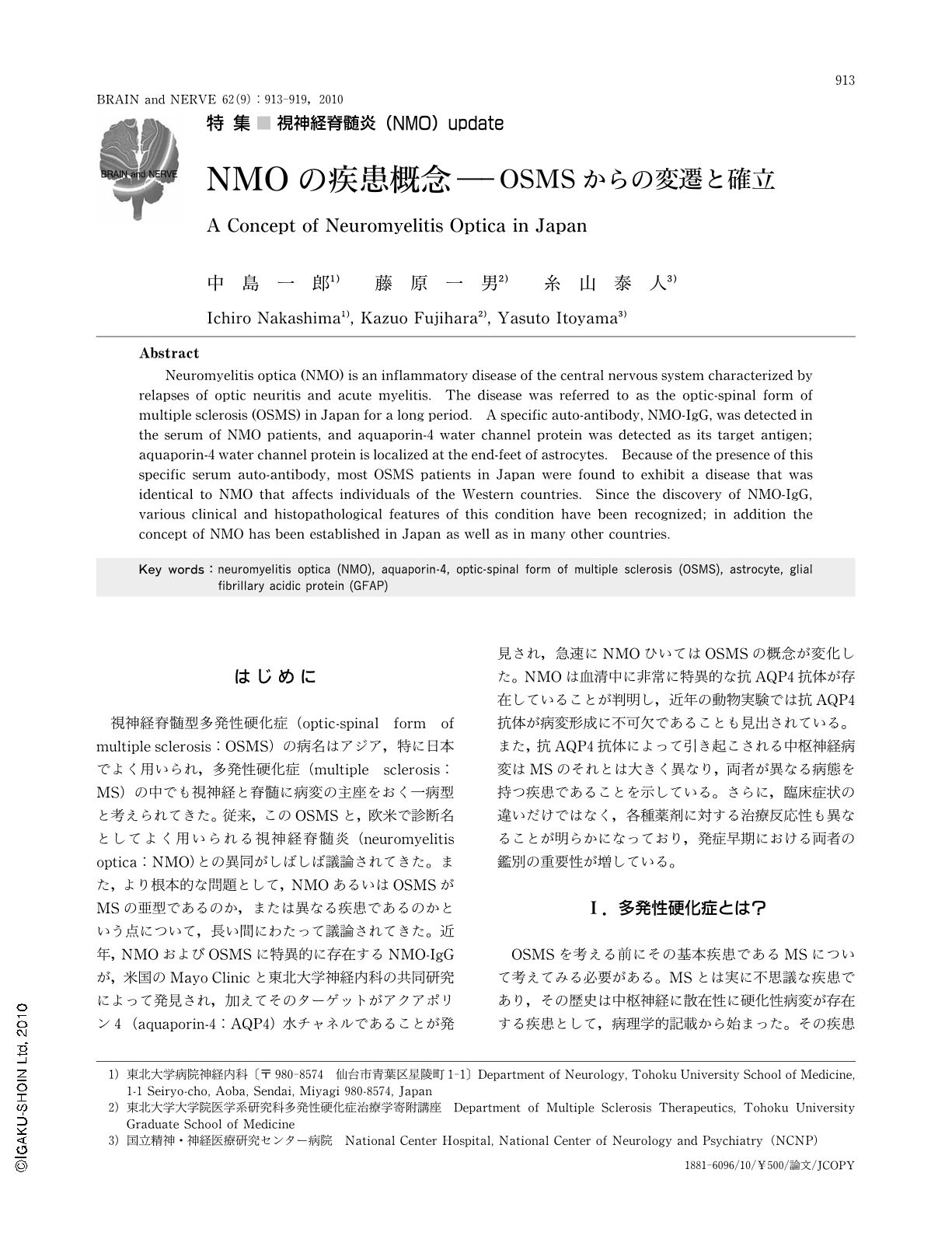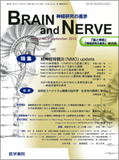Japanese
English
- 有料閲覧
- Abstract 文献概要
- 1ページ目 Look Inside
- 参考文献 Reference
はじめに
視神経脊髄型多発性硬化症(optic-spinal form of multiple sclerosis:OSMS)の病名はアジア,特に日本でよく用いられ,多発性硬化症(multiple sclerosis:MS)の中でも視神経と脊髄に病変の主座をおく一病型と考えられてきた。従来,このOSMSと,欧米で診断名としてよく用いられる視神経脊髄炎(neuromyelitis optica:NMO)との異同がしばしば議論されてきた。また,より根本的な問題として,NMOあるいはOSMSがMSの亜型であるのか,または異なる疾患であるのかという点について,長い間にわたって議論されてきた。近年,NMOおよびOSMSに特異的に存在するNMO-IgGが,米国のMayo Clinicと東北大学神経内科の共同研究によって発見され,加えてそのターゲットがアクアポリン4(aquaporin-4:AQP4)水チャネルであることが発見され,急速にNMOひいてはOSMSの概念が変化した。NMOは血清中に非常に特異的な抗AQP4抗体が存在していることが判明し,近年の動物実験では抗AQP4抗体が病変形成に不可欠であることも見出されている。また,抗AQP4抗体によって引き起こされる中枢神経病変はMSのそれとは大きく異なり,両者が異なる病態を持つ疾患であることを示している。さらに,臨床症状の違いだけではなく,各種薬剤に対する治療反応性も異なることが明らかになっており,発症早期における両者の鑑別の重要性が増している。
Abstract
Neuromyelitis optica (NMO) is an inflammatory disease of the central nervous system characterized by relapses of optic neuritis and acute myelitis. The disease was referred to as the optic-spinal form of multiple sclerosis (OSMS) in Japan for a long period. A specific auto-antibody,NMO-IgG,was detected in the serum of NMO patients,and aquaporin-4 water channel protein was detected as its target antigen; aquaporin-4 water channel protein is localized at the end-feet of astrocytes. Because of the presence of this specific serum auto-antibody,most OSMS patients in Japan were found to exhibit a disease that was identical to NMO that affects individuals of the Western countries. Since the discovery of NMO-IgG,various clinical and histopathological features of this condition have been recognized; in addition the concept of NMO has been established in Japan as well as in many other countries

Copyright © 2010, Igaku-Shoin Ltd. All rights reserved.


